Recently the scientific character of Anthroposophy has been often publically questioned or denied in principle. The Goetheanum and other Anthroposophical institutions have attempted to respond to this, knowing full well that the accusations are part of an overall social context and are often more an instrument and method of deflection or defamation than an expression of a genuine interest in knowledge or a desire for truth.
The Goetheanum sees itself as a School of Spiritual Science with various departments (Sections), as a place of research, training, and teaching, with an inner spiritual core, Anthroposophy, and the ‹esoteric school of the Goetheanum›1 – which, as a course of systematic internal training, is central to all departmental activities. The image of such a School is not easy to convey to the outside world and present academic landscape; university institutions do not commonly have an internal training course. But that could change in the future – and the Goetheanum model has a lot going for it.
However, the image – Rudolf Steiner’s vision and intention of a School – can only be communicated to a limited extent even in the inner world of the Anthroposophical Society, as the de facto sponsor of the School mentioned above. Many of its members understand the School to mean their meetings on First Class content. For them, the School is an esoteric school – a ‹university circle› in this context is understood as a circle of class members and/or mediators of the lessons and a ‹university conversation› as an exchange among themselves. In many places, the mediators’ circles have little or no connection with the specialist Sections and professional work of Anthroposophy, sometimes no longer even with the active part of the Anthroposophical Society in the locality – and form a life of their own. It is not infrequently argued that this understanding of higher education – as a purely esoteric school – is that of the 1923/24 Christmas Conference. Steiner had broken off contact with academic science at that time and put everything on a new spiritual basis. Corresponding citations serve as evidence.
For the Goetheanum, the associated questions of self-understanding and identity are existential – and much will depend on whether it will be possible in the next few years to achieve greater conceptual clarity about the School, and by no means only in terminological terms. What do people mean by the term ‹School of Spiritual Science›? As one wishes to draw on the history of the Anthroposophical Society and Movement and Rudolf Steiner’s intentions in answering this question, historical reflection and consciousness-raising are obligatory. A milestone in the development of the Dornach School under Rudolf Steiner were the events of 1922.2
The Upheaval of 1922
In Germany, Steiner once again addressed the general public with two professionally organized lecture tours in January and May 1922 – and attempted to demonstrate the unique scientific character of his Anthroposophical Spiritual Science.3 He also conducted two «School Courses» with his collaborators in Berlin and The Hague, with vibrant and demanding programs. In Berlin, each of the seven days of the School course in March 1922 was devoted to a particular technical discipline and was chaired by a specialist (inorganic natural science/organic natural science and medicine/philosophy/education/social science/theology/linguistics). Steiner gave the morning lecture in each case, followed by up to five specialized lectures – by academics from the Anthroposophical Society who spoke about the extension of the field with Anthroposophical methods and perspectives.4 On four days of the School Course, Steiner also spoke in the evening in the Upper Hall of the Berlin Philharmonic; other lecturers gave presentations at the Berlin University, and the Dornach Eurythmy Ensemble gave a guest performance in the packed Deutsches Theater. At the Vienna ‹West-East Congress›, in June 1922, there were also extensive specialist events.5
The ‹School Courses›, however, were controversial within the ranks of the Anthroposophical Society and were perceived by many as externalization and academic adaptation of Anthroposophy. Steiner addressed the criticism before members in Stuttgart and Vienna in May and June of 1922. He understood the concern and saw an «abyss» – without a «bridge» or «mediation» – between the spiritual study work within the Anthroposophical branches and the public representation of the new spiritual science. «And we cannot build the bridge simply because the employees are missing and because those who are employees lack the time to build this bridge from what the world demands of us today – the scientific justification of Anthroposophy – and what has to be worked out of esotericism.»6 In Vienna, Steiner told the members that, at present, there was no way around publicly representing Anthroposophy before the scientific consciousness of the time – especially since the opening of the Goetheanum as a ‹School of Spiritual Science› one was forced to do so. However, it was not a matter of bringing Anthroposophy closer to contemporary science but of infusing science with Anthroposophy. The «further education of the esoteric» takes place in Dornach parallel to this and is quite real.7 Steiner’s balance of the School Course in The Hague and the other scientific events in 1922 were highly positive. After returning from The Hague, he praised all the contributions of his collaborators in a lengthy review – Elisabeth Vreede combines «thorough Anthroposophical insight with excellent clarity about how Anthroposophy should be introduced into the individual sciences,» he wrote, for example;8 This said a lot about them and the purpose of the School Courses. «In Holland, my experience was the work in a circle of friendly co-workers. I lived with their work. 9 In the tense year 1922, Steiner was critical only of the Anthroposophical physicians of the Clinical-Therapeutic Institute in Stuttgart and some natural scientists at the Goetheanum.10 The physicians around Friedrich Husemann were, for him, also in their public positioning, much too timid and deliberate, too indecisive and submissive regarding scientific and orthodox medical authorities and paradigms. Steiner was also dissatisfied with the preparation of a scientific conference at the Goetheanum at the end of 1922; in conversations with Lili Kolisko, Ita Wegman, and Albert Steffen, he disapproved of the program presented to him by the Glashaus employees around Oskar Schmiedel and the style of the program («… that the science was presented in such an un-Anthroposophical way»). He said he lacked the courage to really stand up for the spiritual.11
On the New Beginning of the Christmas Conference
A few days after the conversation with Wegman and Steffen, the Goetheanum, the site of the ‹School of Spiritual Science›, burned down completely. In 1923 there was not a single School Course left; the School as a spiritual entity and objective was not destroyed, but its building was. Given the ruin and because of the aggressiveness to which his public lectures and the Goetheanum – up to its arson – had been subjected, Steiner apparently no longer saw any point in drawing attention to the Dornach project with further lecture tours and ‹School Courses›. Instead, he sought to reorganize the Anthroposophical Society from within and shape it into an efficient working organ, an organ for the essence of Anthroposophy and a supporting instrument of the School of Spiritual Science, from whose aims he did not depart. At the re-founding of the Society and its School a year after the fire, Steiner said that in the future, it was a matter of following only the impulses of the spiritual world, of appearing in the sign of the full truth, and as the representative of the Anthroposophical being in the world. He unequivocally rejected attempts to adapt to push Anthroposophy into the background for strategic reasons – for example, in the distribution of Weleda pharmaceuticals or the billposting of eurythmy performances in theaters. The goal, he said, was not the approval of the environment but the courage to represent Anthroposophy «frankly and freely» in all fields. At present, he said, the spiritual world wants a humanly next step; one should let the critics speak without worrying about it any further. A much «stronger push» of the Anthroposophical movement was necessary to assert itself effectively in the present. When the physician Willem Zeylmans van Emmichoven welcomed the establishment of the Medical Section, praised Steiner’s previous courses for physicians but spoke of a necessary «new kingdom in the heart,» Steiner not only accepted his opinion but radicalized it considerably in his approving reply. He said, among other things: «If we describe that which is growing medically on our soil in such a way that we have the ambition that our treatises can stand before the present clinical demands, then we will never come to a certain goal with the things that we actually have as a task […].»12 But this is precisely what Friedrich Husemann and his colleagues in Stuttgart had tried to do so far, and in their own way and in their field, possibly also individual natural scientists in Dornach. Steiner seemed to come to an end with developments that he had previously tolerated but did not consider worth pursuing. He rejected the «welding together» of academic work with Anthroposophy. At the beginning of the first class hour, he said, «With this hour, I would like to return the School as an esoteric institution to the task from which it was in danger of being snatched away in recent years.»13 The School of Spiritual Science at the Goetheanum will be an esoteric school in the future.14
Turnaround or Spiritual Continuity?
This could be interpreted as a completely new beginning and a decisive turning away from all previous ‹School Courses› and academic objectives in favor of ‹pure› Anthroposophy and esotericism – and this kind of Christmas Conference reception is still a tradition today. According to this, the School is where the mantras of the esoteric school are worked with, with the elements of their First Class. But is this what Rudolf Steiner meant and wanted? Without a doubt, he went forward and ahead energetically against fear, stagnation, and conformity (to accepted scientific authorities and doctrines, dominant paradigms, and public trends); he did not want a «mixtum compositum» of conventional science and Anthroposophy but a fundamental renewal of scientific life, of the academic world – also of the whole world of scientific imagination. He wanted an outspoken representation of Anthroposophy and no compromises. Time no longer permitted this, the European developments in society and politics were heading for subsequent catastrophes, and nothing is gained by tolerant waiting and a ‹long breath›. Steiner reacted to the contemporary historical and inner-Anthroposophical situation. He had now experienced defamation of Anthroposophy and his person for many years. Although he did not break off the attempt at dialogue from his side, after the Christmas Conference, he no longer invested any energy or time in Anthroposophical ‹School Courses› and public lecture tours in large cities but built up the Dornach School of Spiritual Science and the Anthroposophical Society that supported it in a new way. He set up the ‹Esoteric School of the Goetheanum› for all potential collaborators who chose to receive this training in the spirit of the Michael Being and Way, as well as the specialized sections for the individual areas of life – the general for all and the special. The esoteric school was to form the inner substance of the Goetheanum and the Anthroposophical Society – and to found the School. But this consists of the Sections whose task is to permeate and transform the disciplines with Anthroposophy, to research, train, and teach – and to bring new impulses into the world, with great responsibility and commitment and with a social mindset. According to Ita Wegman, Steiner understood the Sections as spiritual ‹communities› for work in the world in a Pentecostal spirit.15 Rudolf Steiner had always seen it this way, but not all members of the Anthroposophical Society and not all staff members of the Goetheanum. He wanted productive output and results from the School, and by no means just esoteric lessons and talks. In a night meeting weeks after the fire at the Goetheanum, he said: «The second thing is that this Goetheanum has the secondary title ‹School of Spiritual Science› and that the pretension has been evoked to show scientific achievements. The opposition may be great, but the people must not be right. It is impossible to stand up against this opposition by building a Goetheanum, this School of Spiritual Science, when it can be pointed out that nothing is being accomplished scientifically.»16 Steiner maintained this view at the Christmas Conference and afterward. During the Christmas Conference, he had the physicist Rudolf Maier lecture on the connection between magnetism and light and Lili Kolisko on the effectiveness of ‹smallest entities›, with all the corresponding diagrams and charts from their experimental work. He wanted a ‹real Anthroposophical methodology› in the natural scientific disciplines, indeed, considered it crucial for the future. It is a matter of systematic impulses with concrete research results – «then one of the main obstacles that exist against intellectual research itself in the world today will be removed.» «But all these attempts are basically just before the Anthroposophical view details to a totality, to a totality which is actually needed today scientifically as urgently as possible.»17 Steiner relied on the Sections and their research institutes – in the humanities and natural sciences. He wanted genuine, true esotericism, «the greatest conceivable publicity», visible results, and achievements. Repeatedly he spoke – also at the Christmas Conference – of the medical textbook he was working on with Ita Wegman. «It will come before the eyes of the world …»18
Preparing the Future
Rudolf Steiner had little time left but was preparing for the future. In 1924 he no longer counted on a turnaround in public opinion but on the training of his co-workers and interested professional circles who wanted to join the Goetheanum. Among them were disparate groups such as the ‹young physicians›, the teaching staff of the Stuttgart Waldorf School, and the priests of the Christian Community; he admitted all members of these three groups to the School (even without an individual application and qua profession) and regarded them as representatives, as employees of the university in the civilization work of Anthroposophy.19 Steiner studied new scientific publications until his death and had the corresponding books brought to his bedside by Guenther Wachsmuth from Basel. He knew the alienation, instrumentalization, and social misuse of natural science. He would never have signed a call to ‹follow the science›. But he knew what good scientific work is and can mean for the progress of civilization and human consciousness. That two decades later, in 1945, at the end of the Second World War, his collaborator Guenther Wachsmuth was to publish a work of over 400 pages entitled ‹Earth and Man – Their Formative Forces, Rhythms, and Life Processes› would probably have pleased Steiner; he would have regarded it as an achievement of the Dornach School. In his monograph, Wachsmuth described the Earth in detail as a living organism, with extensive consideration of the scientific research results available at that time in the field of rhythmology and related areas – and in awareness of the danger posed by civilization. Considerable reviews in scientific journals and the ‹Schweizer medizinische Wochenschrift› (Swiss Medical Weekly) subsequently appeared. The latter attested Wachsmuth to have presented the most comprehensive account so far «also of all scientific and medical contributions to the rhythm problem.» In the organ of the ‹Public Service› in Zurich in September 1946, one could read: «Wachsmuth’s work challenges to a quite fundamental statement. Suppose one has to acknowledge his research direction. In that case, there are very many tremendously new perspectives to our world view, and it almost seems high time that in the lecture halls and classrooms, the fields of vision would experience a substantial expansion in this respect.»20
Michael’s Students
One may wonder what all this means for the present and the future. It seems essential to avoid narrowing historical knowledge and simplifying what Rudolf Steiner accomplished and intended with the Christmas Conference 1923/24. It did not mean an inward turn of the Anthroposophical Society and no creation of additional inner circles with esoteric claims to the validity or even leadership. Still, it culminated in the new formulation of a comprehensive concept of higher education in the Michaelic spirit – and its gradual realization. The pace Steiner set in 1924 in building the Sections, in the professional training courses – with a spiritual foundation – and in the reorganization of the Anthroposophical Society was breathtaking. He had only little historical time left to build and work. He wanted to put something into the world that would last – new model institutions, working with a different methodology but serving humanity and the whole of Earth in the field of pedagogy and medicine, curative education and agriculture, etc. The impulse for these institutions was to come from the Dornach School and its research, teaching, and training. Steiner saw the Goetheanum as a spiritual and artistic center, without hierarchical pretensions, but as a heart-organ of spiritual and social initiative. The departments of the Sections were to operate as faculties in the university understanding of research, teaching, and training. Still, at the same time, they were to be esoteric communities – as associations of globally active people who work together based on a deep Anthroposophical-Michaelic impulse in their subject, as «students of Michael.» «Section doctors» or «Section nurses» were, for Ita Wegman, those who were School members and had additionally registered to work (and join) the Medical Section and had been accepted. Around 1930, there were about 300 internationally working physicians, nurses, pharmacists, and curative educators.
Perhaps Steiner would have resumed public ‹School Courses› in the sense of the years 1920 to 1922 after the complete establishment of the Dornach School, completion of the second Goetheanum building, the necessary working institutes, and after the presentation of ‹scientific achievements› – but probably only then. What he accomplished in 1923/24 – also in his dealings with academic science and the public life of his time – was not a turnaround, but a rearrangement of forces. The ‹spirit of the Christmas Conference› is fully compatible with what Steiner had already described at the end of 1911 as the objective of the School of the Johanni Building – «The School for Spiritual Science will take up the knowledge capable of development where its official representatives today let it ossify into materialism, and lead it up to the knowledge of the spirit […].»21
«The Many Problems Will Have to Be Solved.»
In the coming years, much will depend on whether this conception of the School of Spiritual Science once again enters the consciousness of its staff and the members of the Anthroposophical Society – or can continue to gain clarity, strength, and intensity there. The pace and spiritual momentum set by Steiner could not be sustained after 1925, and the Anthroposophical Society became entangled with itself. One who had experienced and understood the Christmas Conference most deeply, Willem Zeylmans van Emmichoven, wrote in 1948: «The many problems connected with the School and the Sections will have to be solved. Yes, what kind of content do these terms have anyway? One has only to think of what Rudolf Steiner planned with the Christmas Conference, of the division of the School into three classes, and the relationship of the sections to the classes, to realize that that which can be realized [now] through our collaboration must be something different and more modest.»22 The other and more modest, however, need not be a completely different one – and some sectional developments after 1948 impressed Zeylmans. His notion of humility is undoubtedly forward-looking – linked to efforts to understand ever more deeply the concept of the School of Spiritual Science, to question established positions, traditions, and terminologies, and to radically search for that which is intellectually intentional and predisposed, the gradual realization of which will be found more in the future than in the past.23 To understand the past with Rudolf Steiner more deeply means training and, therefore, a character of preparation.
Translation Monika Werner
Peter Selg directs the Ita Wegman Institute for Fundamental Anthroposophical Research in Arlesheim and has been a member of the Leadership Team of the General Anthroposophical Section at the Goetheanum since April 2020. He teaches medical anthropology and ethics at the University of Witten-Herdecke and at the Alanus University of Arts and Social Sciences Alfter.
Footnotes
- GA 270 II, 3rd edition. 2008, p. 90.
- See Peter Selg, «Anthroposophy as a Striving for the Christianization of the World.» The crisis year 1922 until the fire of the Goetheanum. Dornach 2022.
- See GA 80 a, 1st edition. 2019 and Peter Selg, Arguments about the future of man. Rudolf Steiner in Germany 1922. Arlesheim 2022.
- See GA 81, 1st edition. 1994.
- Reprint of the Vienna Program in Peter Selg, ‹Anthroposophie …›. A. a. O., p. 72 ff.
- GA 255 b, 1st edition 2003, p. 353.
- GA 211, 3rd edition. 2006, p. 198. See the internal lecture courses held by Steiner in Dornach at this time, which was an expression of his spiritual research and teaching, e.g., GA 210-214.
- GA 82, 2nd edition. 1994, p. 246.
- Ibid., p. 250.
- See Peter Selg, «Anthroposophy …». A. a. O., p. 24 ff.
- See Emanuel Zeylmans van Emmichoven, Who Was Ita Wegman. A documentary. Bd 1. Heidelberg 1990, p. 122
- GA 260, 5th edition. 1991, p. 278.
- GA 270 I, 3rd edition. 2008, p. 1.
- GA 270 III, 3rd edition. 2008, p. 191.
- See Ita Wegman, Memories of Rudolf Steiner. Arlesheim 2009, p. 55.
- GA 259, 1st edition. 1991, p. 254.
- GA 260, 5th edition. 1994, p. 212.
- Ibid., p. 57.
- See Peter Selg, The School of Spiritual Science and the Michael School. Arlesheim 2014, p. 117 ff.
- Reprint of the review in Heinz Herbert Schöffler, Guenther Wachsmuth. A Portrait of Life. Dornach 1995, p. 152.
- GA 337a, 1st edition. 1999, p. 324.
- In: Peter Selg, Willem Zeylmans van Emmichoven. Anthroposophy and the Anthroposophical Society in the 20th Century. Arlesheim 2009, p. 181 f.
- See a. the short position paper of the Goetheanum leadership ‹What does the School of Spiritual Science of the Goetheanum want?›, in: Ueli Hurter/Justus Wittich (eds.), Time of Covid. On the spiritual signature of the present. Dornach 2020, pp. 275-277.



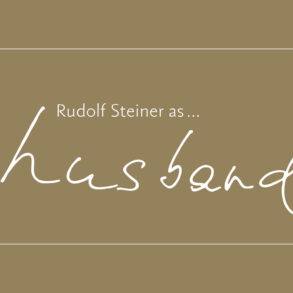
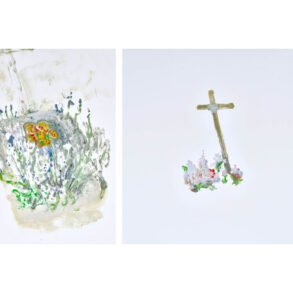
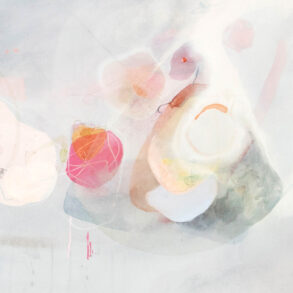
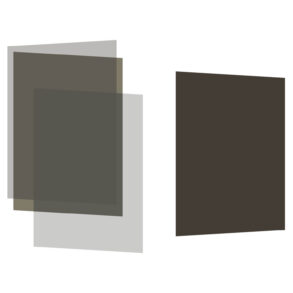
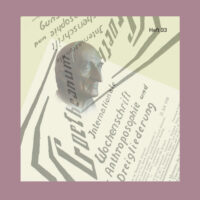
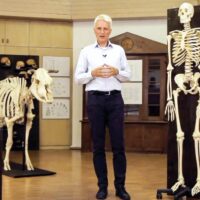

Best regards.